By ANDREA ZACHRICH
Visiting the Roman Forum was one of my favorite days of the entire program, but also one of the most difficult for me personally because it was ludicrously hot and I’m pretty sure I got some mild form of heat stroke (nausea, headache, all that super fun stuff). I know I’ve said this before, but it is blazing hot in Rome in the summer, especially because most days there’s not a cloud a sky. But, we learned a lot and got to see a lot of cool places that I’ve discussed a ton in my classes at UCLA. There’s nothing quite like being able to see the real thing after these past three years studying it, it’s surreal.
We started the day by splitting our class into two smaller groups, and then we got a tour of the Forum by Professor Gurval, and ended with a tour of the Palatine hill with Diana, our Teaching Assistant. This post reflects our schedule for the day – I start with some of the more notable and/or places in the forum I thought had an interesting history, and end with some information about the Palatine hill and the museum up there.
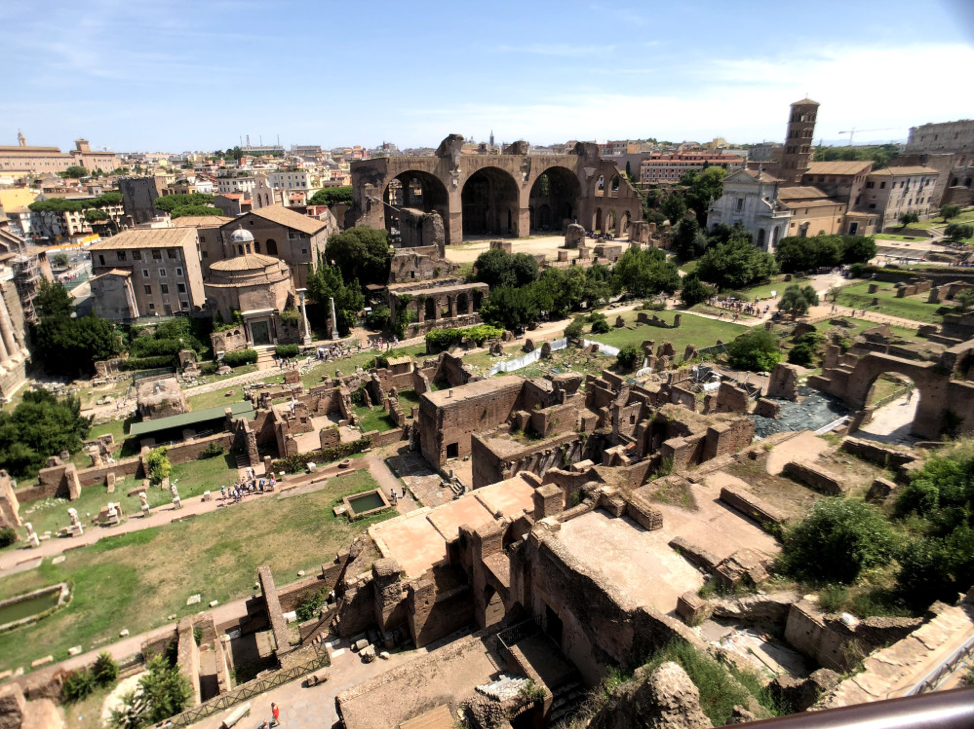
History of the Roman Forum
For most of ancient Rome’s history, the Forum Romanum, or the Roman Forum in English, was the center of life in the city. There was space here dedicated to civic, religious, commercial, and political activities. It served as the place for civil and criminal trials, elections, triumphal processions, and religious ceremonies. Unlike many other fora from antiquity, the space developed gradually over time and was not planned, making the layout a bit chaotic and confusing (in a good way). Eventually, more fora were built next to this original one by the emperors as the city expanded, but the original Roman Forum remained the heart of activity in the city.
The Forum is one of the few places in Rome that has been almost completely excavated down to the ground level during the time of ancient Rome (which is about 2 – 3 stories below the modern level). You have to walk down a ramp/stairs to get into the archeological site.
Some of the main buildings and a brief history (with pictures!)
The Temple of Saturn
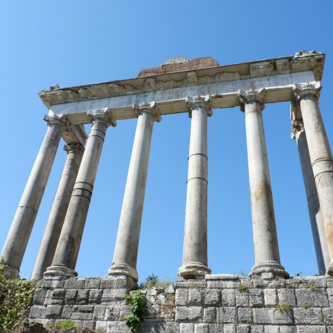
Pictured above is The Temple of Saturn. This building was rebuilt many times. The original one is said to date back close to the founding of Rome and built by one of the first seven kings. The second one was built during the Republican era. The third one, which is the ruins you see in the pictures, was completed after a fire in mid third century AD. This is one of the better preserved temples in the forum; it still has 8 columns, the base, and the frieze above the columns. The god Saturn for whom the temple is dedicated is associated with wealth, and in antiquity this temple was where the Roman treasury was stored (so basically the ancient version of our Fort Knox).
Temple of Romulus
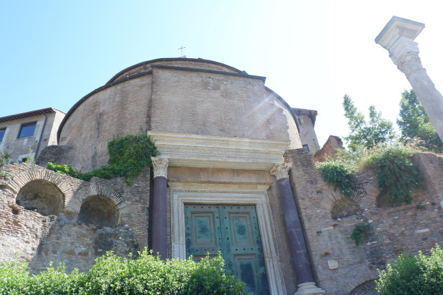
Little is known about this temple, but many scholars believe that it is dedicated not to the first king of Rome but to the son of Maxentius – the rival emperor of Constantine – who had the same name as the founder of Rome. Romulus dies at a young age and his father decided to deify him and build this temple. Fun fact: the bronze doors that you see on this building are the original doors from the early 4th century AD when it was constructed. Nowadays, the temple is the vestibule of the Basilica Santa Cosma e Damiano (which is why it’s so well preserved), and you can go inside the church to see the inside of this temple.
Arch of Titus
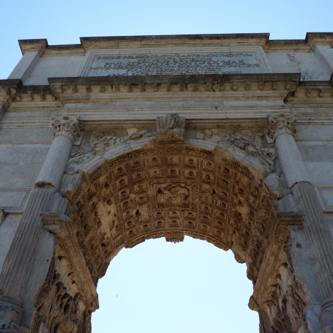
This monument is interesting because it has one the first Roman depictions of a Jewish menorah ever recorded. One of the reliefs inside of the arch features a scene where Roman troops sack Jerusalem. The triumph over Jerusalem occurred in 71 AD and the arch was build 11 years later in 82 AD. The arch was incorporated into a defense wall in the middle ages (which is why the reliefs on the outside of the arch are damaged). In antiquity, Jews refused to walk under the arch because of what is celebrated and due to ancient ban. The arch is one of the last structures you encounter before you continue upwards to the Palatine hill.
Portico of the Harmonious Gods
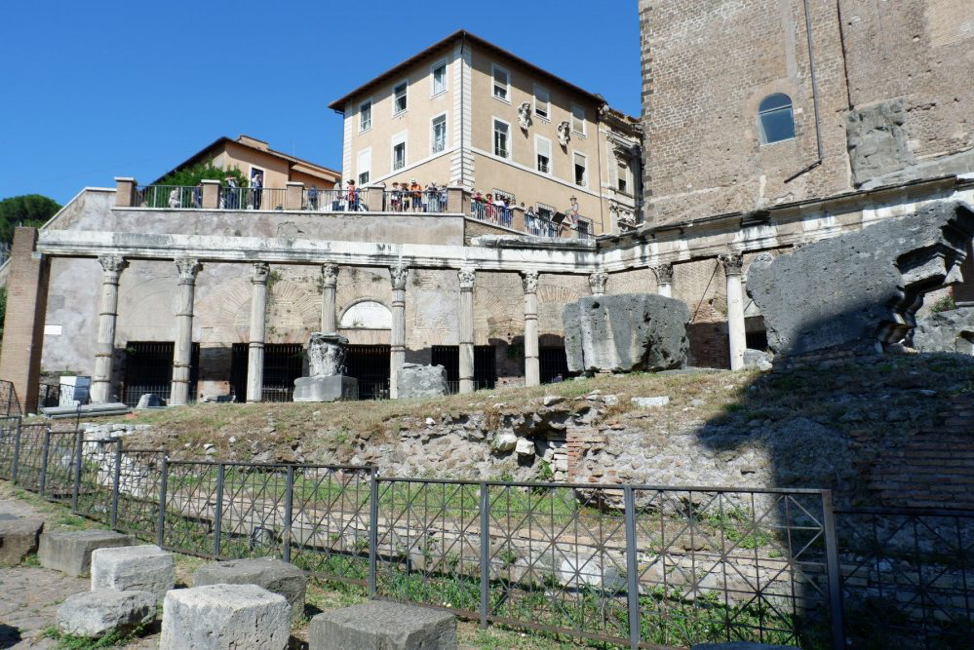
This structure, which lies at the foot of the Capitoline hill at the edge of the forum, was built in 367 AD and was the last pagan shrine to be built in the Forum during the time of the last pagan emperor of Rome – Julian – a descendant of Constantine. The gods to which it was dedicated are the twelve gods in the Roman pantheon. It was excavated in the 19th century, and what you see today is largely a reconstruction from that time.
Temple of the Divine Faustina and Antoninus Pius
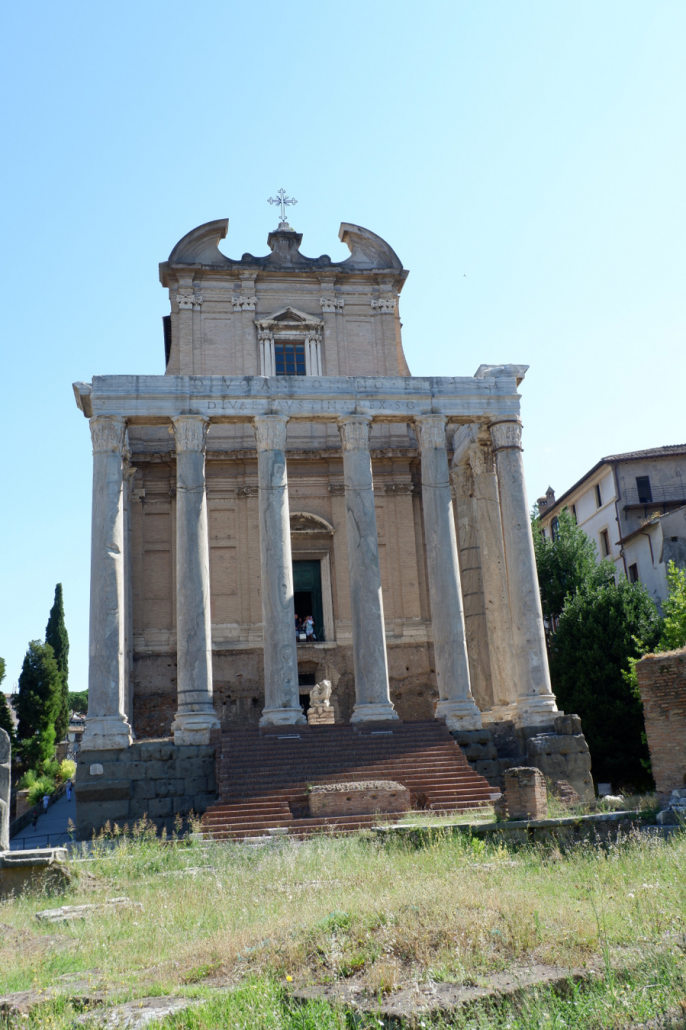
This temple was built in 141 AD to honor the wife of the emperor Antoninus Pius, Faustina the elder, after her death. The emperor deified his very popular wife following her death. After the death of Antonius, the temple was rededicated to include both of them and an inscription was added above the original one adding Antoninus’ name. The inscription essentially says that these two rulers were deified by decree of the senate. The original, and very pretty, marble frieze of the building still remains today, although other elements such as the roof have been replaced over the years. The structure was converted into a church called San Lorenzo in Miranda, which is why it still stands in good condition today.
Arch of Septimius Severus
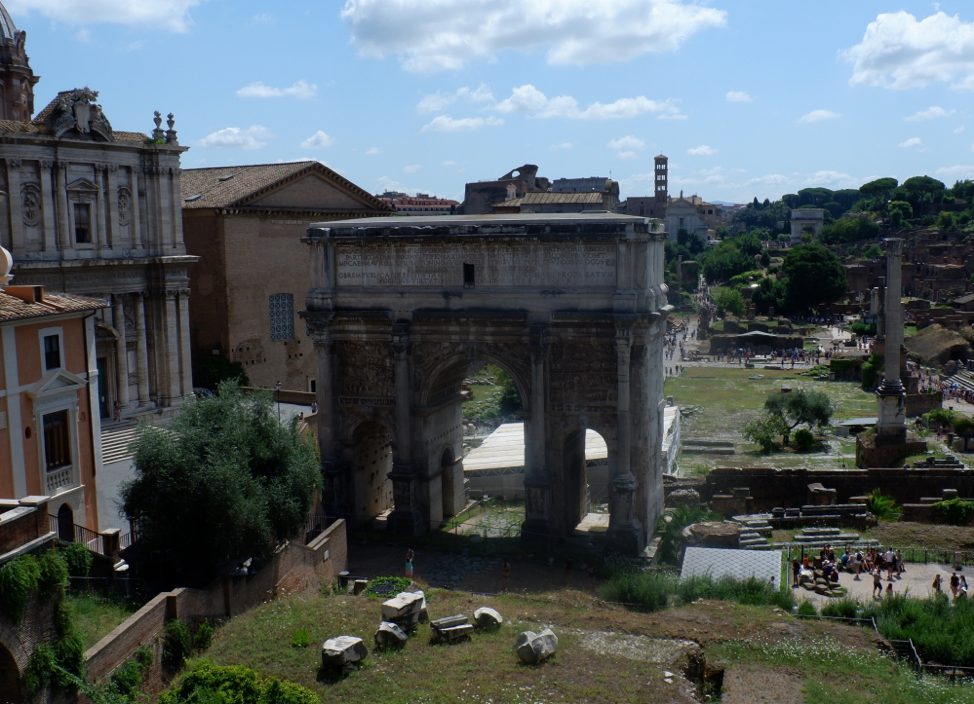
This triumphal arch was dedicated to Emperor Septimius Severus (along with his two sons Geta and Caracalla) in 203 AD to commemorate his victory over the Parthians. Septimius Severus wish for his sons to rule as joint emperors, but Caracalla had Geta killed (as he ran into his mother’s arms, it was a messed up assassination) and then purged representations of him from public record. As such, the images of Geta that were on this arch when it was made were removed by Caracalla. The arch is made of marble with a travertine base. The arch was a military fort during the middle ages and there was a tower built on top of the arch. Half of the arch belonged to the church and was incorporated into a church and the other half owned by a private family (the ones who used it for a fort), and both are credited with keeping the structure in good shape. It is, however, pretty dirty right now (pollution builds up over time) as you can see in the picture above.
Temple of Vesta
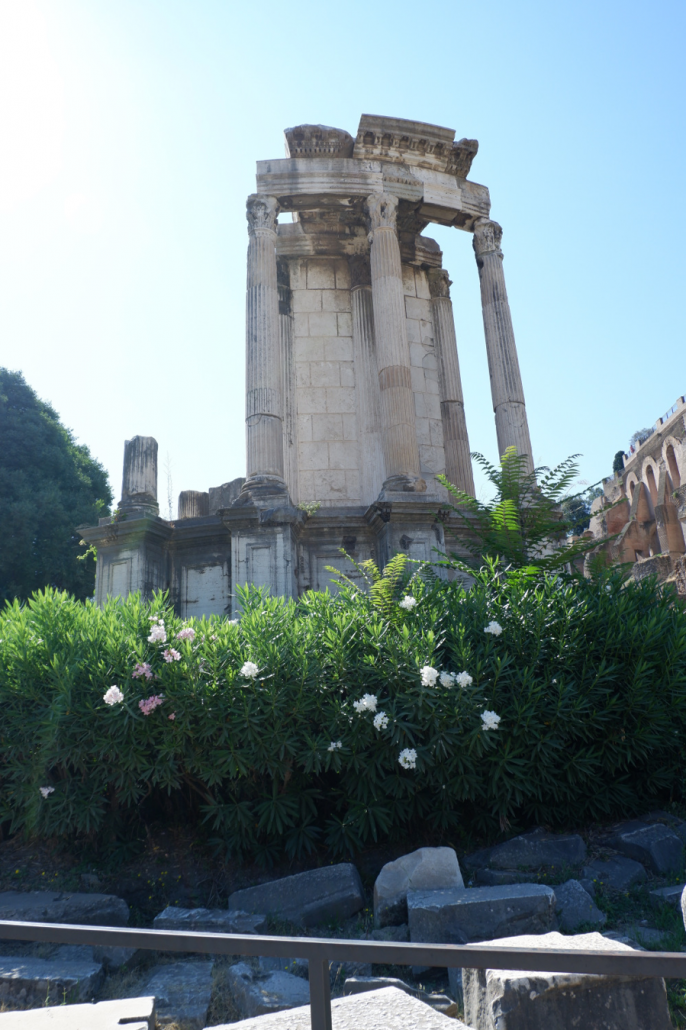
Temples dedicated to the goddess Vesta were always round (but not all round temples belong to Vesta). Vesta is the goddess of the hearth and the home. This temple in the Forum is particularly important, because it was the temple that held the sacred flame of Rome, which the Vestal Virgins who lived in the House of the Vestal Virgins were sworn to keep alight. The Vestal Virgins were a group of six women who performed religious functions for the state of Rome. They were usually given the state by their parents at a young age. They were usually part of the senatorial or equestrian class – although in later times families did not want to give up their daughters and some Vestals were lower class or even slaves. They took vows of chastity that were strict – the punishment for breaking this vow was being buried alive (which did happen a few times, although some scholars suggest it was due to political motivations). After they served their time as Vestals, these women were released from their duties and had many rights that normal Roman women did not. They could marry whomever they wanted, could own land, and did not have a male guardian in charge of them or their finances. The Vestal Virgins were eventually disbanded when Rome became Christian in the 4th century AD.
The Column of Phocas
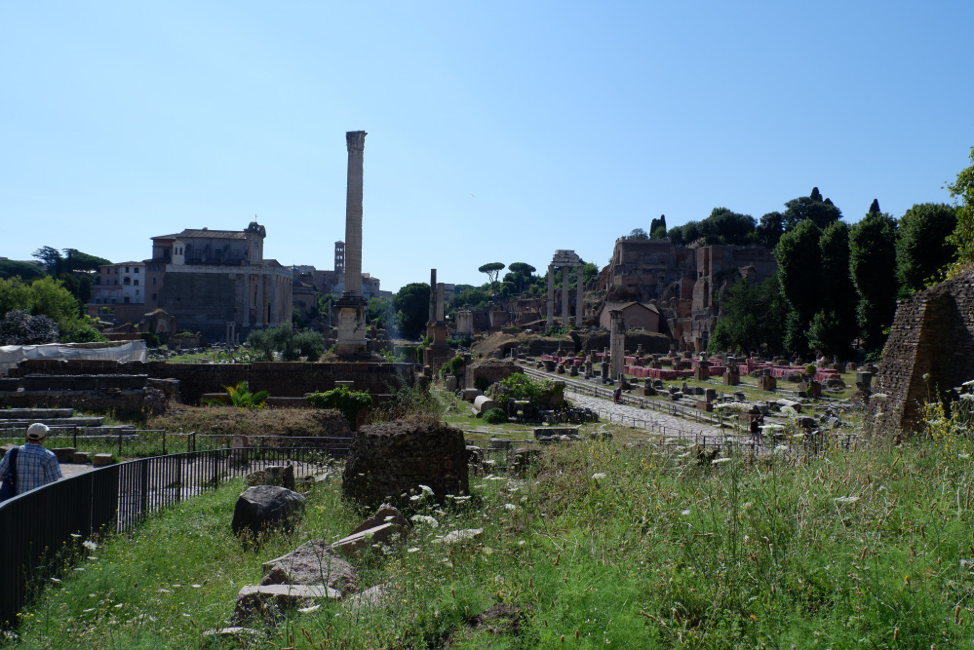
This column was actually the last monument dedicated in the Roman forum. It was dedicated to honor the Roman emperor in the East – Phocas – in 608 AD. The column was likely recycled from an earlier dedication in the 2ndcentury AD. There is an inscription on the base dedicating the column, and then the column stands nearly 50 feet high. It’s one of the tallest structures in the Forum, and has become a bit of a landmark.
The Curia Julia
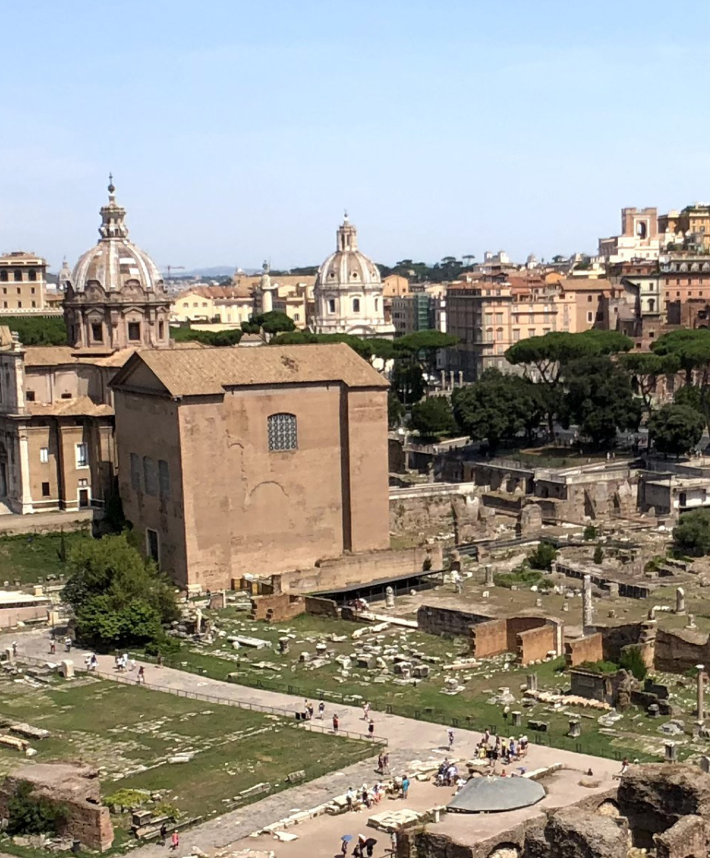
The Curia Julia was the name of the senate house in ancient Rome during the imperial ages. As you can see, the building is fairly well-preserved. A safe bet with ancient buildings is that if it’s well-preserved today, it was either put back together by a more modern restoration or that it was turned into a church so it was maintained and forbidden to rob pieces from it. The Curia Julia was turned into a church. This building was actually started by Julius Caesar after the old senate house burnt down and finished by Augustus. Caesar was actually murdered in the Theater of Pompey and not in the senate house because this one was under construction at the time. The original doors of this building are actually at the Basilica of St. John in Lateran (the original mother church before St. Peter’s was built).
The Palatine Hill
History
The Palatine hill has an extensive history and people have lived there since around the 9thcentury BC. The Palatine Hill, which is one the original seven hills of Rome (which did vary and change through history by the way), was the home of the elite during the Republican age, and the location of the Emperor’s palaces during the Imperial age of ancient Rome. Augustus was the first to build a palace here, and most emperors followed suit by either building their own palace or making changes to existing ones. On the other side of the Palatine hill is the Circus Maximus – the race track for horse chariot racers (a wildly popular sport in ancient Rome). Some emperors would even build boxes to watch the races on the top of the hill so they would not have to go down into the stadium (although the people of Rome never appreciated this very much). The word “palace” comes from the name of the hill “palatine”.
Nowadays, the hill is a sprawling archeological site open to the public. It can be a little confusing, as some of the buildings overlap, some are buried, and some are actually in pretty good shape. Our class used our SUPER ticket to visit the House of Livia (wife of Emperor Augustus) where the two of them lived. The tour included projections on the walls of what the frescoes would have looked like which was very cool. The Palatine hill also boasts great views out onto Rome and also overlooks the Roman Forum, which can be a picture – take opportunity.

The Museum
Also on the Palatine hill is the Palatine museum – a small building that houses statues and other artwork found on the Palatine hill. It’s kind of small, but it has some interesting pieces of art and it’s nice to take a break from the sun for a little while. I would go inside if you get the chance.
Overall, the Forum and the Palatine hill are interesting spots and they’re full of history. If you can, I would go with someone who has some knowledge of ancient history (like a UCLA Classics major). If you can’t, however, phones exist and the site is beautiful all on its own. It’s included in the ticket you purchase for the Coliseum, so you might as well go! The site is iconic of Rome and there is a lot to be learned here.

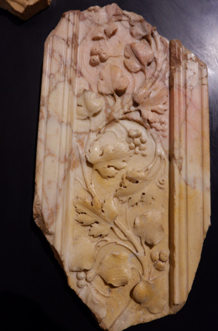
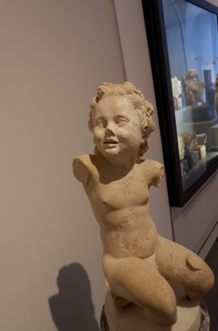
Some tips for visiting
Go early! It gets blazing hot and there is very little shade in either the Forum or on the Palatine hill. I think that most of the tour groups start their tours at around 10 am, so if you can manage to get there before that it’s nice because you won’t get stuck behind massive groups of people (I passionately believe that tour groups over 15 should not be allowed anywhere ever.) Also, make sure you bring a water bottle because there are a bunch of fountains where you can get water in the actual forum and on the Palatine hill. They’re connected to ancient aqueduct lines, and are incredibly convenient and cold. Also, your ticket will get you into both the Coliseum and the Roman Forum for 15 euros. If you get the SUPER ticket, you also have the opportunity to go inside some of the buildings in the Forum and do some virtual-type tours on the Palatine Hill. I don’t think its something you should get unless you’re a huge ancient history fan AND you plan on spending a ton of time in the Roman Forum/Palatine Hill. When I went back a second time with my brother, we just did the Coliseum in the morning and the Roman Forum in the afternoon without all the extras, and it was fine for my brother who doesn’t know a ton about the ancient Romans and isn’t as interested in the history.
I think the Roman Forum is a must see. You can learn a lot about Roman history by studying their buildings and monuments because it gives the modern viewer a sense of what was important to these people. Take your time and try to notice some of the details – the beauty that comes out of these ruined buildings when you give them a second glance just might surprise you.
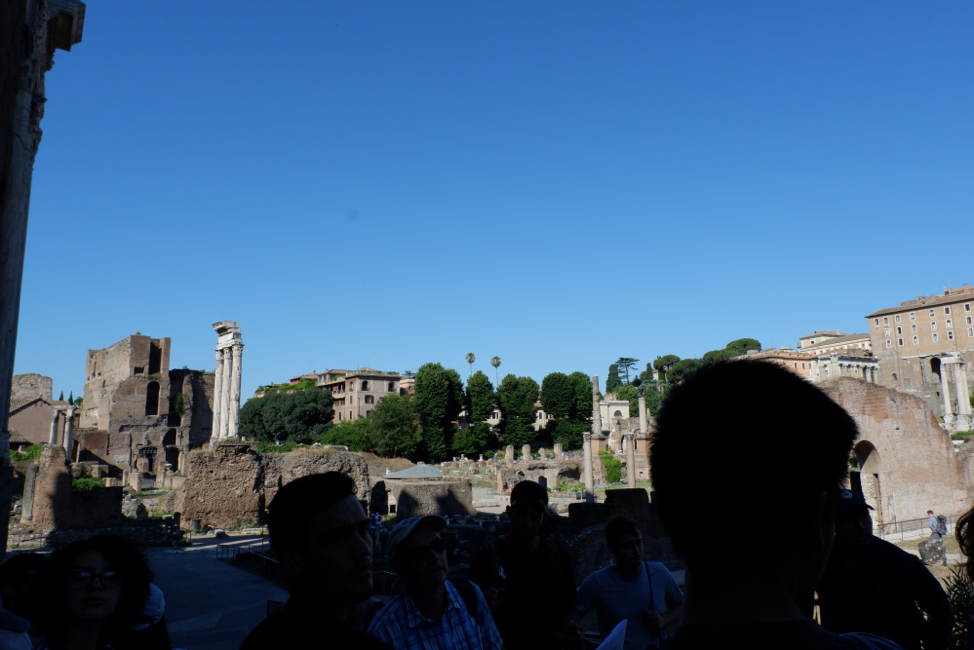
Andrea Zachrichh studied abroad in Rome, Italy, in Summer 2018: https://ieo.ucla.edu/travelstudy/italian-rome/



